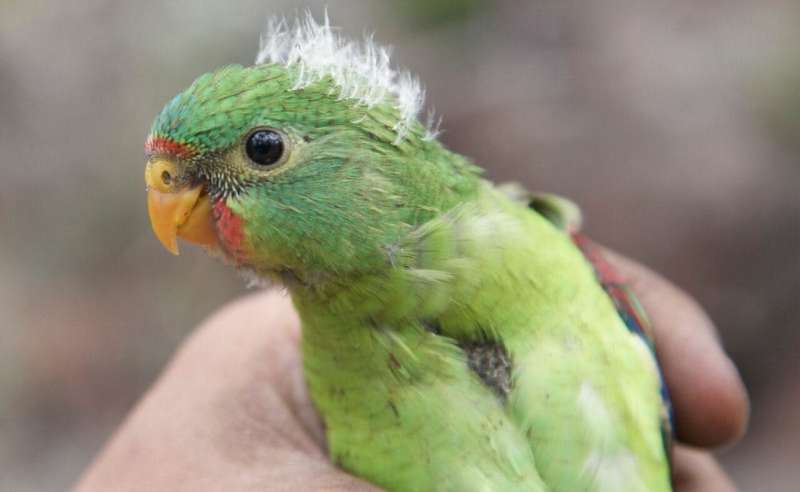This article has been reviewed according to Science X's editorial process and policies. Editors have highlighted the following attributes while ensuring the content's credibility:
fact-checked
trusted source
proofread
Australia's most at-risk bird species share some common traits

Australian birds that live on islands are among the species most at risk of extinction, a first-of-its-kind study from The Australian National University (ANU) has shown. The study is published in the journal Emu—Austral Ornithology.
Australia has more than 750 native bird species. But lead-author Dr. George Olah said many of them are facing an uncertain future. "The numbers are quite sad. By 2020 eight species were already considered extinct, and 10% were threatened with extinction," he said.
"But if we understand more about the factors that increase extinction risk, we can better prioritize conservation efforts. Some species are more prone to extinction than others—we wanted to find out why."
Dr. Olah and his team found three factors that were particularly significant. "Firstly, species living only on islands were much more likely to be at risk of extinction. Think of the emblematic swift parrot and orange-bellied parrot of Tasmania, both considered critically endangered," Dr. Olah said. "This may be because they are less well prepared for the threats posed by introduced species like rats, cats and other mammals."
The second factor was the species' ability to adapt to survive in agricultural areas. "The more able they were to find food in agricultural areas, the less endangered they were predicted to be," Dr. Olah said. "If they can adapt to take advantage of new agricultural lands, perhaps after some of their habitat has been destroyed to make way for it, it's probably a big benefit for the species."
The third important factor was the evolutionary distinctiveness or "uniqueness" of the species. The researchers came up with a score based on things like how many other species there were within the larger bird family.
"The burden of extinction risk seems to disproportionately impact species that have high uniqueness," Dr. Olah said. "Some of these shared traits are also connected to form a larger pattern. For example, we know slow breeders that have a larger body size and maybe live longer generally find it harder to cope with environmental changes."
The study also found that assessments of conservation status at just the species level can mask higher extinction risk at the more granular subspecies level.
"For instance, the ground parrot as a species is considered of least concern today based on the International Union for Conservation of Nature (IUCN) Red List. However, its western subspecies, found in coastal Western Australia, is considered critically endangered in Australia," Dr. Olah said.
"Similarly, the morepork, a small owl species, is least concerned globally due to its large range size in New Zealand, but its subspecies in Norfolk Island is critically endangered in Australia, while its other subspecies from Lord Howe Island has already gone extinct."
The study forms part of the Emu special issue on threats to Australian birds.
Dr. Olah was also a co-author on another study published in the issue, led by Alex Berryman from Birdlife International, which looked at trends and patterns in the extinction risk of Australia's birds over the past three decades. The study calculated the Red List Index for all Australian birds—a measure of extinction rates based on the IUCN Red List.
"More than 50% of the increase in extinction risk between 2010 and 2020 was caused by the 2019–2020 bushfires," Mr. Berryman said.
"The greatest increases overall were in Queensland, South Australia and New South Wales, where drought and wildfire effects were pronounced. Australia is currently failing its international commitments to reducing extinction risk made in 2022 under the Global Biodiversity Framework."
More information: George Olah et al, Biological characteristics of Australian threatened birds, Emu—Austral Ornithology (2024). DOI: 10.1080/01584197.2023.2285821
Provided by Australian National University



















